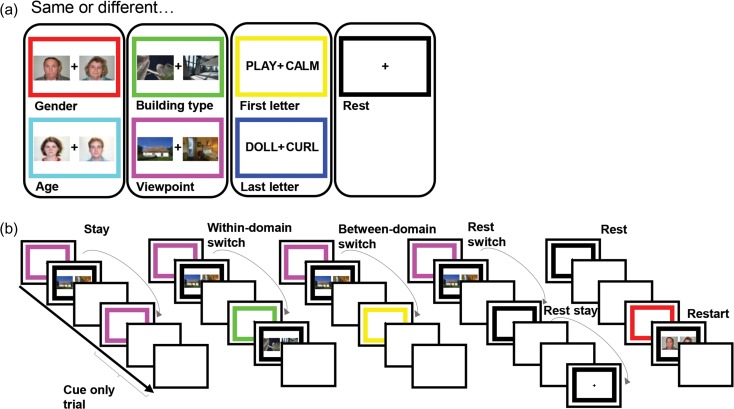Figure 1.
Task design. Participants were required to make same/different judgements on pairs of stimuli based on a task rule. Each task rule was cued by the frame color, learnt by participants in a training session prior to scanning. (a) Each of the 6 tasks and their associated frame color. There were 3 stimulus domains with 2 task rules associated with each. An additional black frame cued rest trials in which there was no upcoming task to complete. (b) Experimental design. Each trial consisted of a 2 s cue phase in which the colored frame specifying the task rule for the upcoming trial (or rest trial) was presented, followed by an execution phase (until response) or a 1.2 s delay, followed by a 1.75 s intertrial interval. “Cue-only trials” refer to task trials where there was no execution phase. The tasks were presented in a pseudorandom order creating 6 switch conditions: task stay trials (task trials preceded by the same task), within-domain switch (task trials preceded by same domain task trials), between-domain switch (task trials preceded by different domain task trials), rest switch (rest trials preceded by task trials), rest stay (rest trials preceded by rest trials), and restart (task trials preceded by rest trials).

